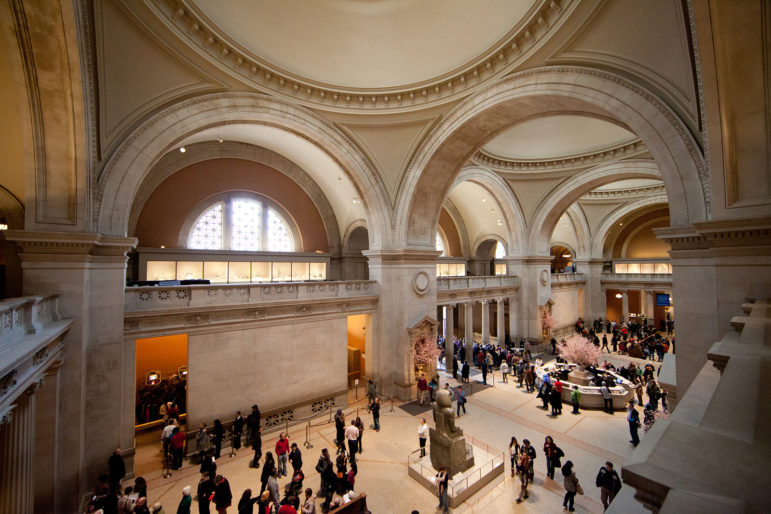
July 18, 2016, ArtNet
Nonprofits that suddenly find themselves in a hole they have dug themselves that will be difficult to crawl out of are a dime a dozen, and it’s always excruciating to manage a painful turnaround and your public credibility at the same time. When you are a closely scrutinized, world-class cultural institution like the Met…well, the whole process becomes that much more intense.
Brian Boucher, a senior writer for ArtNet News, sums up the escalating financial and perhaps leadership troubles at the storied Metropolitan Museum of Art. New York museums are capital-intensive institutions with lots of fixed costs and a recent tendency toward investing heavily in build-outs and exhibitions that bring further fixed costs. These endeavors, described in “Museums as Vanity Purchases and the Problem of Nonprofit Obesity,” are favored by many large donors but can leave the organization in a pickle if, for instance, the economy takes a downturn at the wrong time or if a projection regarding the fit of exhibition to audience is less than entirely accurate.
The Met is the largest art museum in the United States, and one of the most visited in the world. Its 2015 audited financial statement reports assets worth more than $4 billion. With total revenue and support of $344 million and expenses of $361 million, there was a deficit in 2015, but only of $4 million after a transfer of non-operating funds. The Met admits it is facing a $10 million deficit this fiscal year that may result in 100 or more job cuts to balance the budget going forward.
Three months ago, NPQ reported on the Met’s announcement of a hiring freeze and voluntary buyouts. The museum suggested its deficit could grow as large as $40 million if these steps were not taken. A more recent update covered the departure of three high profile—and, one presumes, highly paid—Met employees.
Mr. Boucher describes several Met projects that are not helping improve the Met’s financial picture, such as the $600 million renovation of its wing for modern and contemporary art, which was suspended. But is the museum obese and able to sustain the losses, or is it cutting into necessary muscle? Only time will tell, but this is why we want to stay out of those holes in the first place. As some say, “foresight is morality.”
As America’s preeminent museum with much of the world’s most precious art in its possession, the institution can seem larger than life. The Times offers this window into the Met’s inner sanctum, through the eyes of its director, Thomas Campbell:
Sign up for our free newsletters
Subscribe to NPQ's newsletters to have our top stories delivered directly to your inbox.
By signing up, you agree to our privacy policy and terms of use, and to receive messages from NPQ and our partners.
Asked how the Met—with its board of several financiers—failed to anticipate the $8.5 million annual debt service on $250 million in bonds issued for capital infrastructure work (one of the reasons given for its deficit), Mr. Weiss said that arrangement had been made before he started. And Campbell said that the Met is “still learning.”
“What we have to emphasize is, we’re a big institution,” [Campbell] said. “Turning around in the ocean takes time.”
There have been only nine directors of the Metropolitan Museum since it was founded, in 1870.
The Met Breuer opened last March, with an exhibition ironically called “Unfinished: Thoughts Left Visible.” The Met is both unfinished and its present incompleteness is quite visible. Here is an excerpt from the description of that exhibition:
The exhibition examines the term “unfinished” across the visual arts in the broadest possible way; it includes works left incomplete by their makers, a result that often provides insight into the artists’ creative process, as well as works that engage a non finito—intentionally unfinished—aesthetic that embraces the unresolved and open-ended. Featured artists who explored such an aesthetic include some of history’s greatest practitioners, among them Titian, Rembrandt, Turner, and Cézanne, as well as modern and contemporary artists, including Janine Antoni, Lygia Clark, Jackson Pollock, and Robert Rauschenberg, who have taken the unfinished in entirely new directions, alternately blurring the distinction between making and un-making, extending the boundaries of art into both space and time, and recruiting viewers to complete the objects they had begun.
“Aesthetic that embraces the unresolved and open-ended.” The likes of Rembrandt can leave work “unresolved” and still be celebrated. Unfortunately for the Met’s leadership, art is for the edification of the museum’s patrons; balancing budgets is the duty of each day’s work. “Still learning” is not an acceptable excuse when the bills come due. Closing the museum’s deficit and making way for healthy financial performance in years to come is the only path forward.
For our sector composed of mostly small nonprofits, the Met’s present troubles may at least offer some comfort in knowing that even the mighty can falter from time to time. Still, unlike many smaller groups finding themselves in similar straits, the Met will certainly live on to achieve new glories.—James Schaffer













